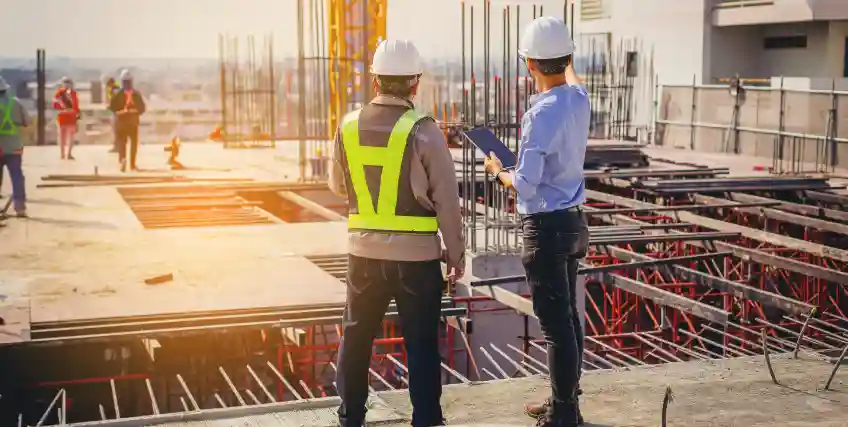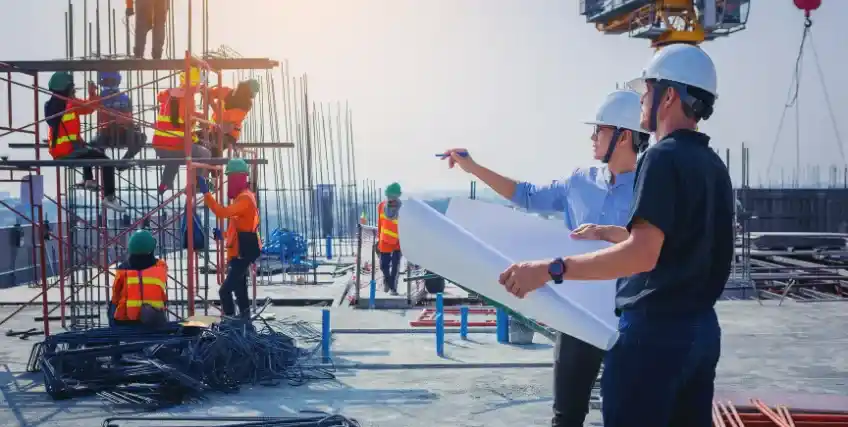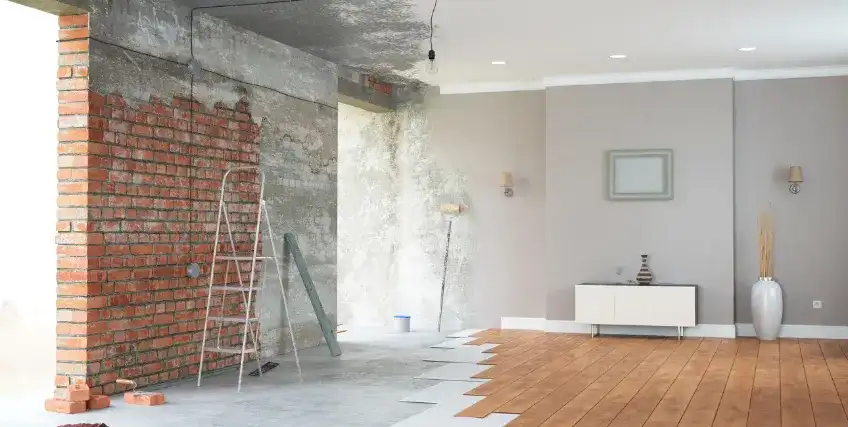Why Construction Businesses May Face Higher Lending Rates and How to Secure Better Ones
July 23, 2025 | Last Updated on: July 23, 2025

Construction businesses are no strangers to tight cash flow. Whether it’s upfront material costs, payroll obligations, or equipment purchases, the need for capital never stops. But when these firms seek business funding, they often face higher business loan lending rates than other industries.
This isn’t random. Most lenders view construction as high-risk. The reasons are layered: project delays, seasonal revenue, and volatile building costs. All these factors can lead to inconsistent monthly payments, which raises the perceived risk during underwriting. In response, interest rates go up.
Even if your company is profitable, if your revenue depends on one or two large clients, that’s a red flag for lenders. Add in the fact that much of your equipment depreciates fast and doesn’t hold the same value as real estate, and your loan options become limited.
Traditional small business loans and term loans may still be available, but expect to pay more compared to retail, tech, or service-based firms. Equipment financing, business line of credit, or even SBA 7(a) loans might be viable paths but again, rate structures will differ.
Understanding why your business loan lending rates are higher is the first step to lowering them. In the next sections, we’ll break down the causes and show you how to fight back with strategy.
Why Construction Loans Come with More Risk
Construction businesses face unique challenges that directly impact how lenders view them. These risks affect eligibility, structure, and ultimately the business loan lending rates that they’re offered.
1. High Default Probability
The construction industry has one of the highest small business failure rates in the U.S. Market fluctuations, delayed permits, weather disruptions, and rising material costs can halt a project mid-way. These interruptions directly impact cash flow and increase the risk of missed monthly payments. Lenders interpret this as a higher chance of default, which pushes up business loan lending rates. Even well-established firms may find that they’re offered higher interest rates simply because of the unpredictability baked into the industry.
2. Limited Collateral Value
Unlike a restaurant or retail store, construction companies rely heavily on depreciating assets like bulldozers, trucks, and excavators. These assets lose value quickly and don’t carry the long-term stability that real estate does. That means even if you offer machinery as collateral, it won’t significantly improve your chances of getting lower interest rates. This lack of strong collateral contributes to higher business loan lending rates, especially for term loans or equipment financing.
3. Long Project Timelines
Construction jobs can stretch for months, even years. With long payment cycles and milestone-based invoicing, cash flow becomes inconsistent. This makes it hard to align with fixed repayment terms, causing concerns for lenders. The longer the project, the more chances of delays or disputes, which raises the total cost of borrowing. As a result, many firms get stuck with high commercial loan interest rates or short-term loans with steep fees.
How Loan Structure Drives Up the Cost of Borrowing
Not all loan products are built the same way. The structure of a loan, such as its term, rate type, and security, plays a major role in determining business loan lending rates for construction companies.
1. Short-Term Loans
Many construction firms rely on short-term loans to cover quick cash needs—like emergency repairs or seasonal material costs. But these loans often come with steep factor rates or inflated annual percentage rates (APR). Because the repayment window is compressed, the total interest paid can be much higher than expected. While they offer speed and convenience, short-term structures are among the most expensive forms of business financing, especially when the loan amount exceeds your monthly capacity.
2. Unsecured Loans
Without strong collateral, many construction owners are offered unsecured loans. These loans don’t require assets, but the trade-off is higher business loan interest rates. Since the creditworthiness of the borrower becomes the main qualifying factor, any gaps in your credit history or cash flow can inflate your pricing. Unsecured structures also lead to higher loan fees, shorter terms, and in some cases, variable rate pricing, driving up the total cost of borrowing.
3. Variable-Rate Loans
When interest rates are tied to the prime rate or market benchmarks, your payments can shift dramatically. Construction firms using variable-rate loans may start with low payments, but rising inflation or a hike by the Federal Reserve can lead to unpredictable costs. These loans are harder to budget around, especially when project cash flow is staggered. Over time, they can result in higher commercial loan rates compared to fixed-rate structures.
Smart Ways to Lower Your Construction Loan Rates
High rates aren’t set in stone. Construction firms can take practical steps to qualify for better business loan lending rates, even in a high-risk lending environment.
1. Improve Your Credit Profile
Your personal credit score and business credit history play a major role in rate decisions. A score above 680 may give you access to lower business loan interest rates. Pay down debt, avoid recent late payments, and keep utilization under 30%. Lenders also review your company’s annual revenue, so clear, accurate financials can help lower perceived risk. If your creditworthiness improves, your interest rates can too, especially with banks or credit unions offering traditional small business loans.
2. Offer Strong Collateral
Most construction companies own trucks, tools, or equipment. While not as valuable as commercial real estate, these assets can help secure term loans with lower interest rates. Lenders feel more secure when they can recover losses, so they reward borrowers with reduced business loan lending rates. You can also use real property or personal guarantees, depending on the type of loan. Just make sure you understand the life of the loan and what’s at stake.
3. Demonstrate Predictable Cash Flow
Consistent income and solid contracts are gold for lenders. If your firm maintains positive cash flow and steady deposits, you’re less of a risk. You need to submit clear business’s financials, including bank statements and projected receivables. This strengthens your loan application and may qualify you for fixed interest rates or longer repayment terms. Lenders look for stable inflows that prove your ability to cover monthly payments without delays.
4. Explore SBA-Backed Financing
The U.S. Small Business Administration (SBA) reduces lender risk through partial guarantees. That means borrowers like you can access SBA 7(a) loans or real estate loans with competitive rates. These products often come with longer repayment terms, capped interest rates, and fewer loan fees. Though paperwork is heavier, SBA loans are worth exploring for construction firms seeking lower business loan lending rates, especially for working capital or equipment purchases.
Final Tips Before You Apply
Even if your credit isn’t perfect or your business is new, there are smart moves that can help reduce your business loan lending rates.
Start by comparing lenders; not all of them offer the same loan terms, fees, or interest rates. Use a business loan calculator to estimate total cost before agreeing to any deal. Many borrowers forget to factor in the origination fee, prepayment penalties, or variable interest clauses.
Organize your documents. Having updated financial statements, tax returns, and proof of upcoming contracts improves your creditworthiness and speeds up underwriting. This is especially important if you're applying for real estate loans or need funds for long-term projects.
Consider refinancing if your current loan has a high rate. Even a small drop in your annual percentage rate (APR) can save thousands over the life of the loan. SBA loans and fixed-rate loans are great refinancing options when available.
Lastly, never rush. Whether you’re securing working capital, equipment funding, or a business line of credit, taking time to review options can lead to better business loan lending rates and lower risk over time.
Conclusion
High business loan lending rates may feel unavoidable in construction, but they don’t have to be your forever reality. These higher costs stem from real risks, such as delayed payments, depreciating equipment, and project-based income. But you’re not powerless.
When you work on your credit history, improve cash flow reporting, and offer reliable collateral, you shift how lenders view your profile. Even newer firms can access lower interest rates by using smart strategies like SBA-backed financing, refinancing, and accurate financial documentation.
Choosing the right type of loan is important. Not all business financing options carry the same cost over the life of the loan. Some come packed with hidden fees or floating rates that spike over time.
To succeed, compare offers, ask the right questions, and never jump at the first approval. The more prepared and transparent you are, the better your chances of locking in reasonable business loan lending rates, so your focus stays where it belongs: on building.
FAQs on Business Loan Lending Rates in Construction Industry and How to Lower Them
1. Why are business loan lending rates higher for construction businesses?
Lenders view construction as high-risk due to delayed payments, seasonal cash flow, and project delays. These factors raise the likelihood of missed payments, which increases business loan lending rates across most loan options, especially unsecured or short-term products.
2. Can I lower my business loan lending rates by offering equipment as collateral?
Even though construction equipment depreciates quickly, it still lowers lender risk. Secured loans usually offer better interest rates, particularly if combined with solid credit history and strong financials.
3. Do SBA loans offer better business loan interest rates for construction firms?
SBA 7(a) loans and SBA 504 loans come with longer terms and capped business loan interest rates, making them ideal for equipment, real estate, or working capital needs.
4. How does credit history impact business loan lending rates?
Poor or limited credit history signals risk. Lenders respond by increasing business loan lending rates or reducing the loan amount. A credit score above 680 gives you better access to competitive rates.
5. Should I consider fixed-rate loans over variable-rate ones?
If your cash flow is uneven, fixed-rate loans provide payment stability. Variable-rate loans might start lower but can rise quickly if the Federal Reserve adjusts the prime rate.
Frequent searches leading to this page
Related Articles
Navigating the Challenges of 0% Down Construction Loans: What Borrowers Should Know
October 16, 2025
Navigating New Construction Loans: Financing Your Business Build
September 30, 2025
How to Choose the Best Construction Loan Lender for Renovation Projects
September 11, 2025
Term Loans are made by Itria Ventures LLC or Cross River Bank, Member FDIC. This is not a deposit product. California residents: Itria Ventures LLC is licensed by the Department of Financial Protection and Innovation. Loans are made or arranged pursuant to California Financing Law License # 60DBO-35839




